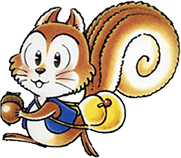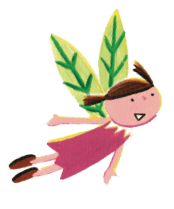COURSES
For one-year-old children in the sensory-motor stage, it is very important to use all five senses and experience a variety of activities.
Coo Chan Land is a place where parents and children can get to know each other through eurhythmics activities.
By listening to music and responding to it, children will find it enjoyable and will develop sensitivity, which is the basis for language acquisition and imagination.
In addition, musical activities that involve skin-to-skin contact between parents and children bring about stable mental development.
Course outline
- Format
- Group class with 2 instructors and 2-8 students
- Duration
- 6 months to 1 year
- Frequency
- 18 times/6 months, 36 times/1 year
- Time
- 40 minutes
- Next
- Kulu Kulu Club
- Feature
- Kawai original songs and
teaching materials
Depending on the country or region, there may be some courses that are not offered, or there may be differences in the number of lessons, lesson time, etc.
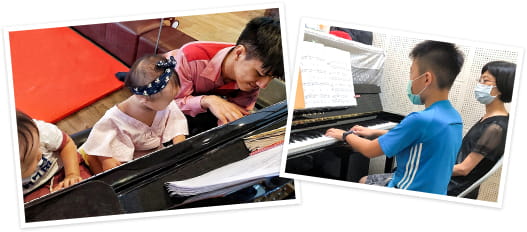
Lesson Flow
Eurythmic classes are designed to develop children's five senses through music while promoting skin ship activities between parents and children.
Coo Chan Land will nurture children's sensitivity through various experiences such as singing and performing with musical instruments.
Warm up
Enjoy a simple activity to start the lesson.
Theme song
Singing the theme song increases the children's anticipation for the lesson.
Eurhythmic activities
Enjoy eurhythmic activities to simple music.
Original Songs
Experience various activities that will help children develop their senses, all accompanied by music.
Children’s songs
Participate in musical activities such as singing and playing instruments with songs that are rooted in the region and nation.


Appreciation
The instructor plays many kinds of music for the children in each lesson.
Ending song
Sing the theme song again to conclude the lesson.
The development of two-year-old children is nothing short of remarkable.
In this age, they are full of curiosity and their sensory and motor abilities will
increase dramatically.
Kulu Kulu Club is a course full of attractions, with a focus on eurythmic activities that allow children to experience music with their whole body, as well as play using a variety of
teaching materials.
Through many experiences, students will develop a foundation for musical expression full of creativity, as well as cooperativeness and social skills.
Course outline
- Format
- Group class with 2 instructors and 2-8 students
- Duration
- 6 months to 1 year
- Frequency
- 18 times/6 months, 36 times/1 year
- Time
- 60 minutes
- Next
- Basic course or
皮可莉大世界(Piccol World)
- Feature
- Kawai original songs and teaching
materials
Depending on the country or region, there may be some courses that are not offered, or there may be differences in the number of lessons, lesson time, etc.
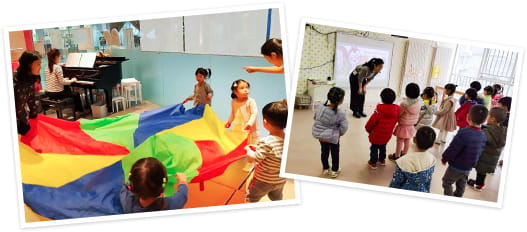
Lesson Flow
Eurythmic classes are designed to develop children's five senses through music while promoting skin ship activities between parents and children.
Kulu Kulu Club will nurture children's sensitivity through various experiences such as singing and performing musical instruments.
Free Playing
Children learn to cooperate with each other by sharing teaching materials and playing together.
Warm up
Enjoy a simple activity to start the lesson.
Theme song
Singing the theme song increases the children's anticipation for the lesson.
Improvisational Eurhythmics
Enjoy eurhythmic activities to the music performed in an impromptu manner.
Original songs
Experience various activities that will help children develop their senses, all accompanied by music.

Titled Activity
Participate in activities that promote the development of sensory and motor abilities through musical activities and modeling creations
Appreciation
The instructor plays many kinds of music for the children in each lesson.
Ending song
Sing the theme song again to conclude the lesson.
All students are provided with a keyboard and learn to play the keyboard in a group setting with group rhythmic activities and ensembles.
Students can learn not only solo performance skills but also ensemble skills and music reading and writing skills (solfege skills) while having fun.
In addition, by learning together with friends of the same age, students develop a sense of competition, which motivates them to improve faster.
Course outline
- Format
- Group class with 1 instructor and 3-8 students
- Duration
- 1 year
- Frequency
- 40 times/1 year
- Time
- 60 minutes
- Next
- SOUND TREE Personal Class
- Feature
- Kawai original songs and children’s songs
Depending on the country or region, there may be some courses that are not offered, or there may be differences in the number of lessons, lesson time, etc.

Lesson Flow
Basic Course is a fun introduction to the keyboard for 3-year-olds who are full of curiosity.
Lessons consist of five activities: singing, moving, rhythmic, keyboard, and ensemble.
Theme song
Singing the theme song increases the children's anticipation for the lesson.
Children’s Songs
Experience the joy of singing through songs that are rooted in the region and nation.
Imitation activity
Interact with the instructor by imitating phrases and rhythms.
Rhythm activity
Acquire a sense of beat and rhythm patterns, sometimes using flashcards.
Original songs
While fully enjoying music, students will acquire the ability to express themselves musically through singing, keyboard playing, and ensembles.
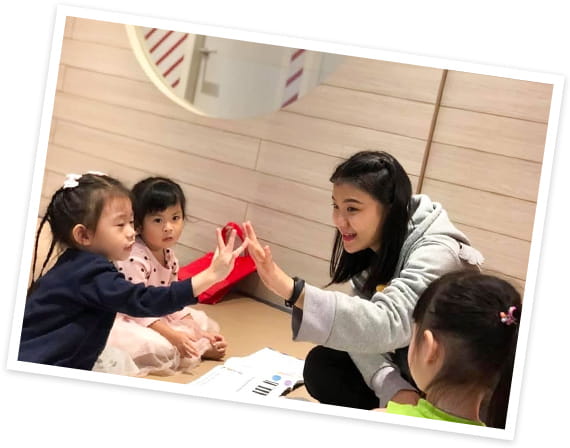
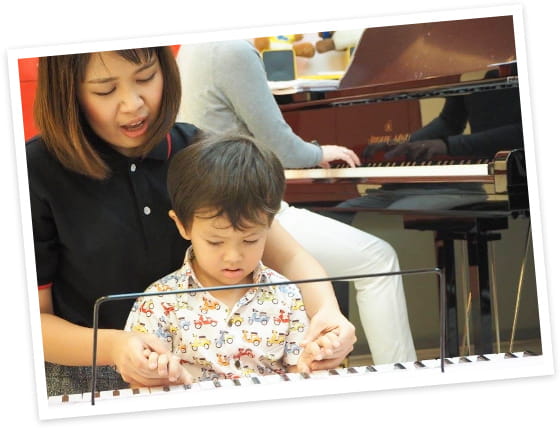
Workbook
Work on a workbook to deepen understanding of the textbook and to develop their skills of reading notes.
Ending Song
Sing the theme song again to conclude the lesson.
皮可莉大世界(Piccol World) awakens children’s innate curiosity about music and
develops their potential.
In the early stages of the program, children will sing and dance to experience music with their whole body and naturally develop the basic skills for musical expression.
Course outline
- Format
- Group class with 1 instructor and 3-8 students
- Duration
- 1 year
- Frequency
- 40 times/1 year
- Time
- 60 minutes
- Next
- SOUND TREE Personal Class
- Feature
- Kawai original songs and children’s songs
Depending on the country or region, there may be some courses that are not offered, or there may be differences in the number of lessons, lesson time, etc.
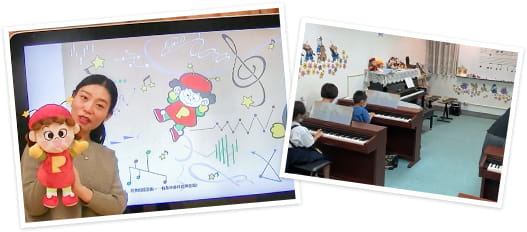
Lesson Flow
皮可莉大世界(Piccol World) lessons consist of five processes: moving, playing,
learning, singing, and ensemble.
The textbook is like a picture book where children learn music
with the characters Piccol and Popolo.
Using Graphic notation, children can fully enjoy music in the rich imagination.
Warm up
Singing the theme song increases the children's anticipation for the lesson.
Imagining and creative activity
By developing images in the world of imagination, students will develop the ability to express themselves freely and creatively in music.
Moving activity
We bring out precious personality in each student through music.
In addition, we create delight through respecting and harmonizing each other's personality.
Rhythm activity
Learn the beat and rhythm patterns by interacting with the instructor through rhythm and imitation activities.
Playing instruments
Using percussion instruments can be played with simple techniques, students will experience the expression of sound.
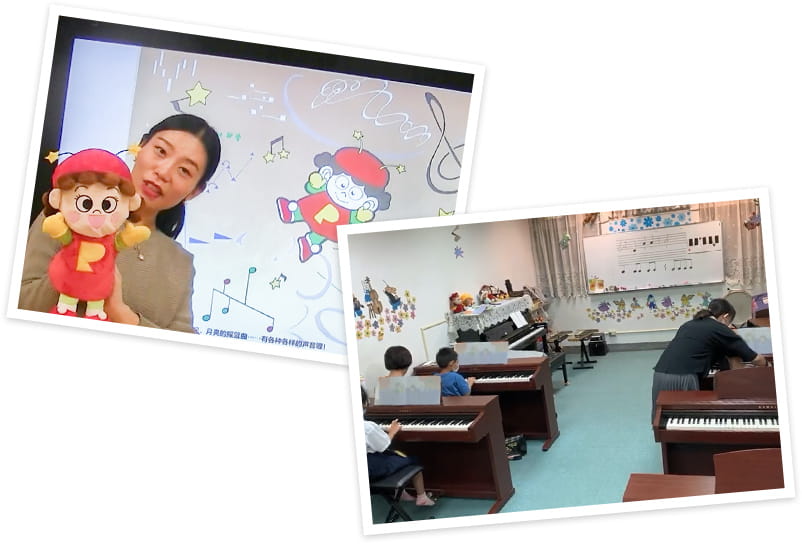
Playing keyboard
By utilizing rhythmic and imaginative activities, each student will be guided to play the keyboard with their own imagination.
Ensemble
Students will also develop social and cooperative skills by having fun musical experiences with friends while expressing themselves in ensemble activities.
Ending Song
Sing the theme song again to conclude the lesson.
These lessons use the "Sound Tree" method, which was developed from the know-how of the Kawai Music School's group lessons cultivated over 60 years, as well as
from research and trials in piano education.
Our goal is to nurture children who can express all kinds of musical emotions by using this new method, which is not found in conventional learning methods, as the main teaching material. From the very first lesson of this course, students can feel the joy of playing the piano freely and actively express themselves at the piano.
Course outline
- Format
- Group class with 1 instructor and 3-8 students
- Duration
- -
- Frequency
- 18-24 times per SOUND TREE 1A
- Time
- 60 minutes
- Next
- SOUND TREE Personal Class
- Feature
- Kawai original textbooks that can be
commonly used for
SOUND TREE Personal Class
Depending on the country or region, there may be some courses that are not offered, or there may be differences in the number of lessons, lesson time, etc.
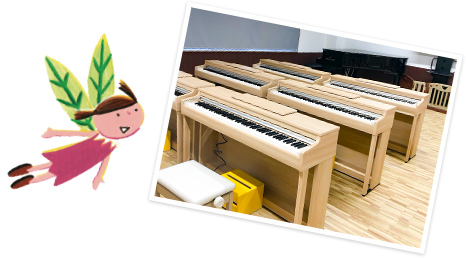
Lesson Flow
SOUND TREE Group Class is based on the curriculum for SOUND TREE Personal Class, with the addition of effective solfege and rhythm ensemble activities through group study, making it a smooth transition to the Personal Class.
Warm up
Learn the beat and rhythm patterns by interacting with the instructor through rhythm and imitation activities.
Theme song
Singing the theme song increases the children's anticipation for the lesson.
Original Songs
We bring out precious personality in each student through music.
In addition, we create delight through respecting and harmonizing each other's personality.
Workbook
Learn basic music knowledge such as reading music and understanding notes and music signs.
Playing instruments
Using percussion instruments can be played with simple techniques, students will experience the expression of sound.
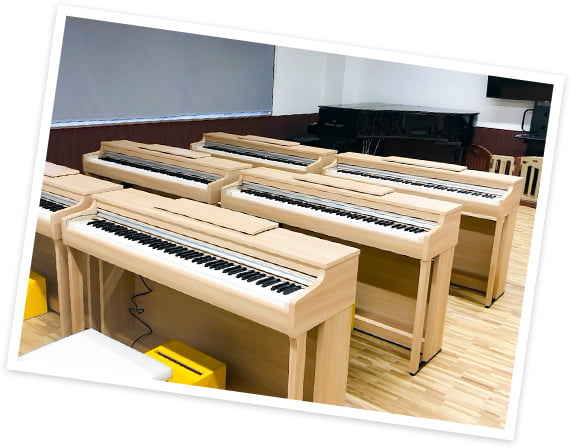
“Sound Tree 1A”, which is the very first textbook of “SOUND TREE” series is a textbook designed to help 4-year-olds learn to play the piano without difficulty.
It provides the best possible encounter with the piano for young children, and is carefully designed so that they will grow to love the piano as they progress through the lessons.
Of course, children over the age of five can learn in a shorter period of time with even less difficulties.
Course outline
- Format
- Private lesson with 1 instructor
- Duration
- -
- Frequency
- 40 times/1 year
- Time
- 30 minutes
- Next
- -
- Feature
- Kawai original textbooks that can be
commonly used for
SOUND TREE Personal Class
Depending on the country or region, there may be some courses that are not offered, or there may be differences in the number of lessons, lesson time, etc.
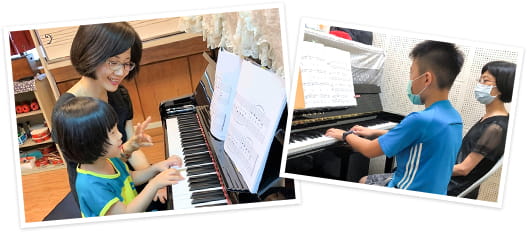
Lesson Flow
This is a private lesson with one instructor and one student. With lessons that are carefully tailored to each student's individuality, children will experience the joy of expressing themselves in their own way and develop their confidence.
Communication through the piano
The lessons are not just about playing, but also about getting interested in the tone and the piano itself.
Teaching materials tailored to children's developmental stages
SOUND TREE textbook gives step-by-step approaches and tasks appropriate for age-specific abilities.
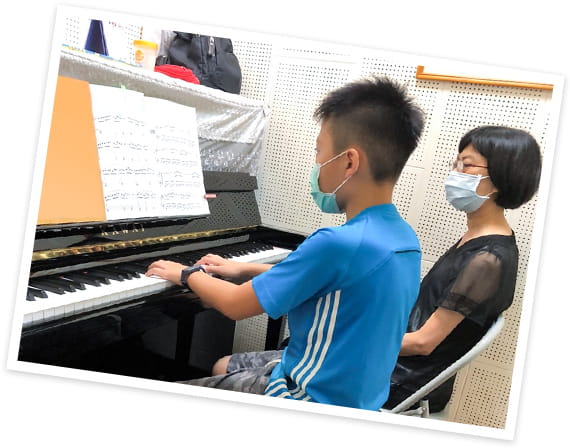
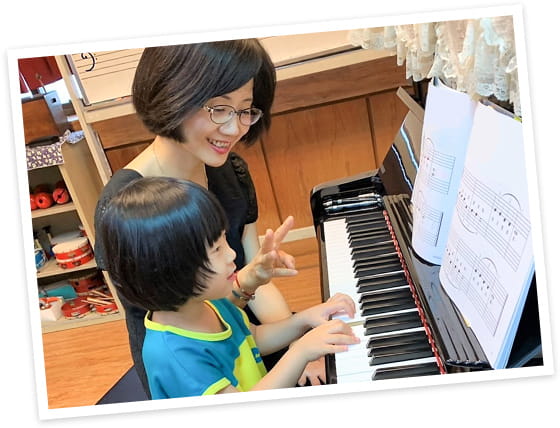
Lessons by piano playing while singing the song.
In order to fully feel the music, the first textbook consists entirely of songs that have lyrics and can be sung.
Learn music theory at the same time with supplementary materials
The Workbook linked to the SOUND TREE textbook encourages early acquisition of music reading skills.
The Kawai Grade Test is a system in which we certify students' piano performance
in terms of technique and expression.
SOUND TREE textbooks are classified into "levels" according to the progress of the curriculum.
In the course of study, the level of proficiency and understanding is checked
and certified as a "Grade".
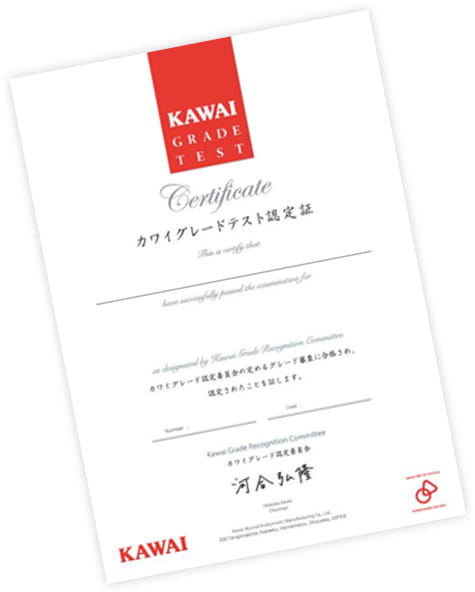
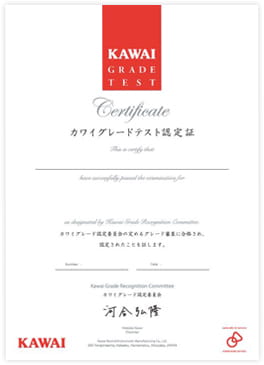
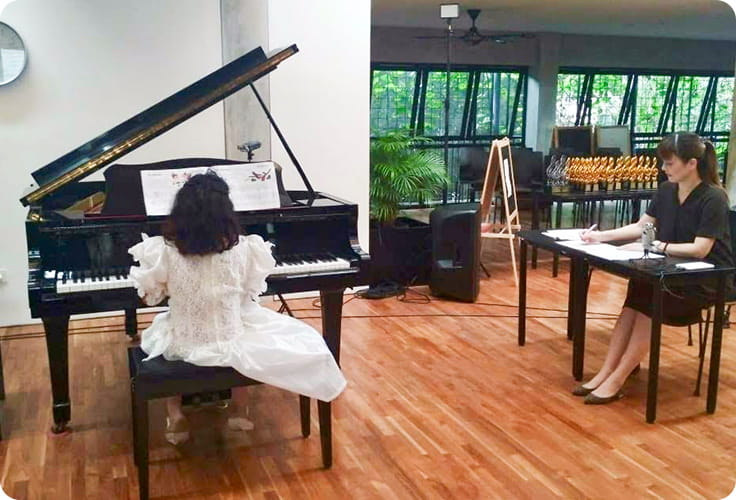
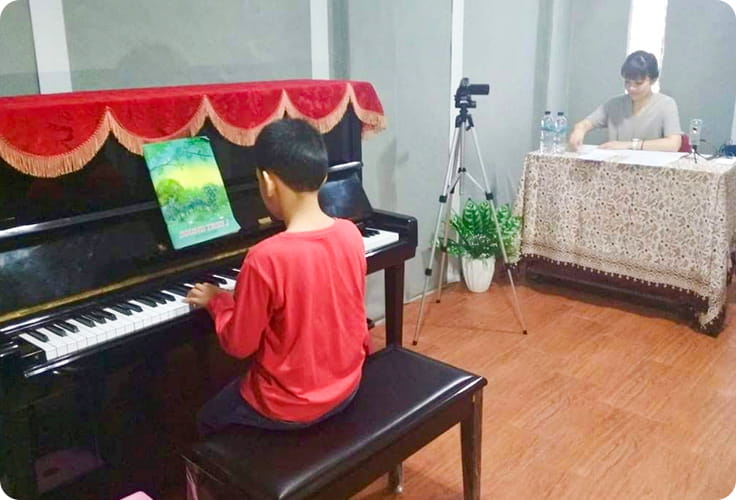
SOUND FANS is designed for students who have never played the piano or read sheet music before, allowing them to learn their favorite music one piece at a time, according to their level and purpose.
Lessons contain the four learning elements of singing, playing, listening, and knowing.
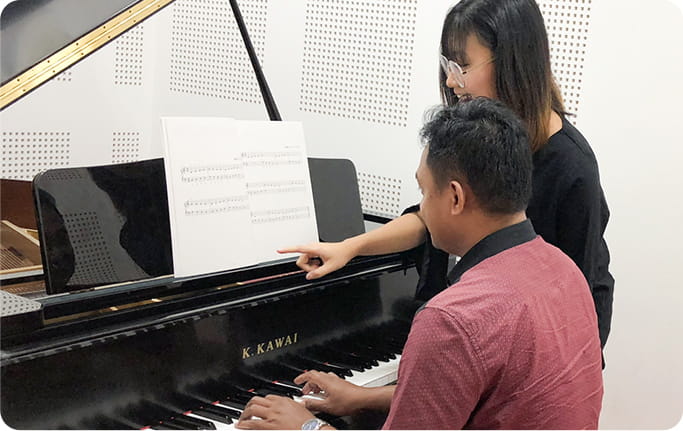
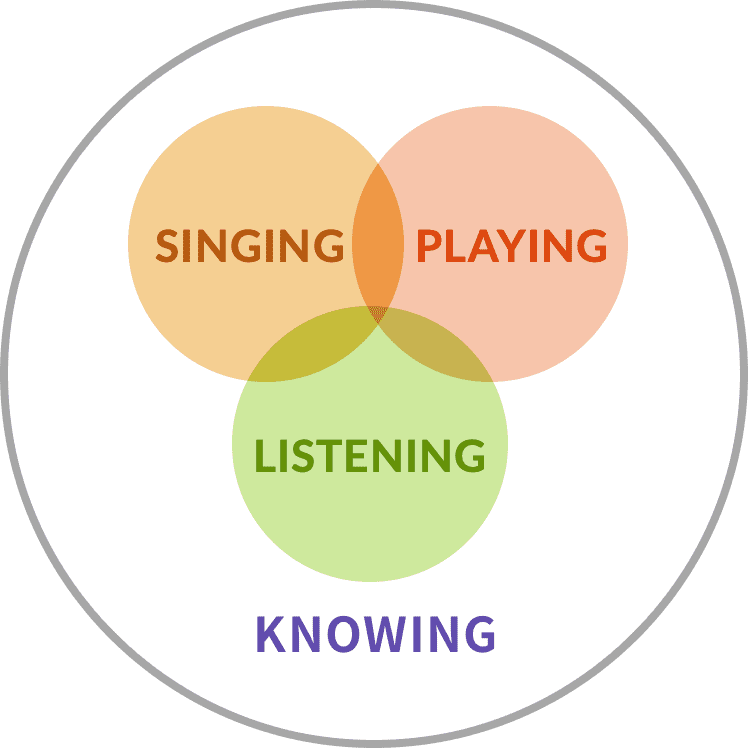
-
SINGING
Sing the melody first in order to learn the song.
By singing, student can feel the music naturally and progress to playing the keyboard without difficulty. -
PLAYING
Play the melody while singing it.
-
LISTENING
Feel the song by listening to the original song, your own performance, or even performance by other pianists.
-
KNOWING
Knowing the chords used in the piece and the historical background of the piece will deepen your expression.




